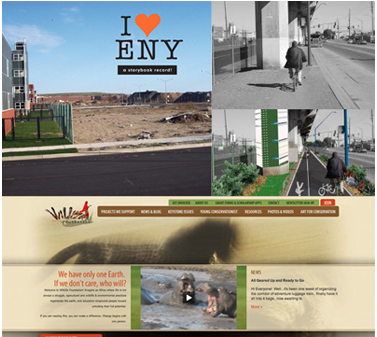 Nonprofits are some of the most prolific, most impactful, and most creative innovators I've ever seen.
Nonprofits are some of the most prolific, most impactful, and most creative innovators I've ever seen.
We don't think of ourselves that way. We do battle against huge societal problems. And we don’t have enough resources — enough help, enough money, enough technology, enough supporters, enough time — to do our work in the way we want. But we don't look at the problems and throw our hands. We don’t give up. We don't say, “we can’t make a difference.” Because we have the will to create change. And so we find more ways to stretch our dollars, to engage our volunteers, and to bend technology to meet our needs.
And that will is what creates innovation. Innovation happens when people work within constraints — in an environment of not enough — and they figure out how to do it anyway.
Nonprofits do that every single day. We put our communities and tools together to create new solutions.
Twenty-four years of helping nonprofit organizations with their technology challenges and here, at TechSoup Global, we see the creativity that happens on the ground. We see it in the broad range of projects that responded to our NetSquared Challenges. We see it in the stories that people have shared in our Show Your  Impact contests. And we see it in the events we participate in, events like Launch:Health that showcased a range of amazing possibilities and really demonstrated the breadth of both invention and innovation.
Impact contests. And we see it in the events we participate in, events like Launch:Health that showcased a range of amazing possibilities and really demonstrated the breadth of both invention and innovation.
Take Chlorine Bank for example. There’s technology involved, yes. But the real innovation is in the way they bring the technology to communities, how they set up a sustainable supply chain and provide support over time to so that the community can take charge of its own drinking water. And they've seen results — at least a 25% decrease in water-borne diseases after the intervention.
There's also DatAgro, one of the Featured Projects from NetSquared Year 4. DatAgro uses simple feature phones to make information available across rural farming collaboratives in Latin America. This information helps farmers increase their yields, get weather information, and receive emergency alerts.
These projects have something in common: they are using known technologies to increase needed resources (safe drinking water, food) in a sustainable way within the communities.
These kinds of solutions, solutions that help build the structures of support inside community, constitute, I believe, the most important kind of innovations. Innovations that can be adopted by a community. That's not always true of the latest, shiniest, most elegant of technologies. Innovations that increase a community’s ability to manage and support its own resources. Those innovative solutions create a change that produces real results in local ways.
It's not just important for own egos that we think of these, and many other solutions, as innovative. It's important to our causes as well. When we start trying to find the innovations, the places where we succeeded, and share them outside of our own communities. Share them in contests or at conferences or on social networks. When we start to do that, we give other people ideas, we find our own solutions are further supported and built on. This kind of work — finding local innovations, sharing them across communities, building on them — will lift the whole sector in ways that produce an even higher level of change. And this can only happen if we believe, not just in the scarcity of our resources, but the abundance of our solutions.
*Marnie Webb is the co-CEO of TechSoup Global. She blogs at http://ext337.org.


COMMENTS